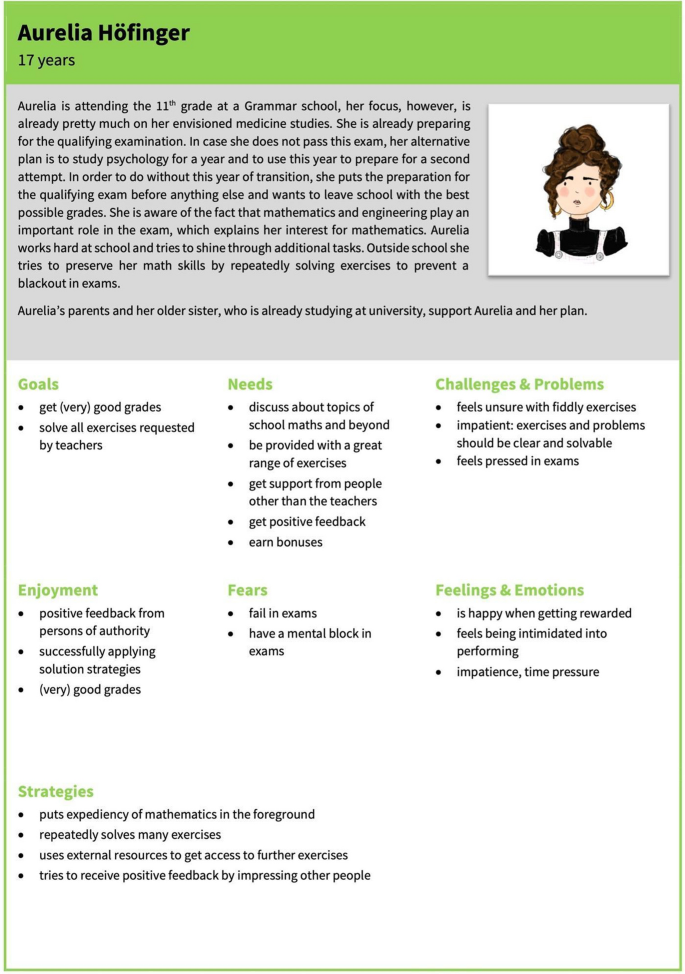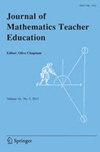Utilising personas as a methodological approach to support prospective mathematics teachers’ adaptation and development of digital mathematics learning resources
IF 2.1
2区 教育学
Q1 EDUCATION & EDUCATIONAL RESEARCH
引用次数: 0
Abstract
Abstract Personas, initially originated in user experience research, are short and simplified representations of particular user groups, and this methodological approach has recently gained ground in educational research. This study aims to explore aspects of personas that may be beneficial for prospective mathematics teachers when they develop digital learning resources. To explore such aspects, we employed qualitative interviews, thinking-out-loud techniques, and jointly developed learning resources with prospective mathematics teachers, and analysed this diverse data with a combination of case study and grounded theory approaches. Consequently, we were able to identify the following essential aspects of using personas in our study: (A) personas as representatives of real people, (B) personas as planning & feedback tools for material development, (C) professionalisation of prospective mathematics teachers (by using personas), (D) differentiation/individualisation for personas through digital learning resources, and (E) motivational elements of digital mathematics learning resources. Based on our results, we concluded that using personas could broaden prospective mathematics teachers’ views on student characteristics and demands that may enable teachers to facilitate the development of differentiated and individualised digital mathematics learning resources.

利用人物角色作为一种方法论方法来支持准数学教师适应和开发数字数学学习资源
摘要人物角色,最初起源于用户体验研究,是特定用户群体的简短和简化的表示,这种方法方法最近在教育研究中获得了基础。本研究旨在探讨人物角色在未来数学教师开发数字学习资源时可能有益的方面。为了探索这些方面,我们采用了定性访谈,大声思考技术,并与未来的数学教师共同开发学习资源,并采用案例研究和扎根理论相结合的方法对这些多样化的数据进行了分析。因此,我们能够确定在我们的研究中使用人物角色的以下基本方面:(A)人物角色作为真实人物的代表,(B)人物角色作为计划和;(C)未来数学教师的专业化(通过使用人物角色),(D)通过数字学习资源实现人物角色的差异化/个性化,以及(E)数字数学学习资源的激励因素。基于我们的研究结果,我们得出结论,使用人物角色可以拓宽未来数学教师对学生特征和需求的看法,这可能有助于教师促进差异化和个性化数字数学学习资源的开发。
本文章由计算机程序翻译,如有差异,请以英文原文为准。
求助全文
约1分钟内获得全文
求助全文
来源期刊

Journal of Mathematics Teacher Education
EDUCATION & EDUCATIONAL RESEARCH-
CiteScore
5.40
自引率
9.50%
发文量
35
期刊介绍:
The Journal of Mathematics Teacher Education (JMTE) is devoted to research into the education of mathematics teachers and development of teaching that promotes students'' successful learning of mathematics. JMTE focuses on all stages of professional development of mathematics teachers and teacher-educators and serves as a forum for considering institutional, societal and cultural influences that impact on teachers'' learning, and ultimately that of their students. Critical analyses of particular programmes, development initiatives, technology, assessment, teaching diverse populations and policy matters, as these topics relate to the main focuses of the journal, are welcome. All papers are rigorously refereed.
Papers may be submitted to one of three sections of JMTE as follows: Research papers: these papers should reflect the main focuses of the journal identified above and should be of more than local or national interest.
Mathematics Teacher Education Around the World: these papers focus on programmes and issues of national significance that could be of wider interest or influence.
Reader Commentary: these are short contributions; for example, offering a response to a paper published in JMTE or developing a theoretical idea. Authors should state clearly the section to which they are submitting a paper. As general guidance, papers should not normally exceed the following word lengths: (1) 10,000 words; (2) 5,000 words; (3) 3,000 words. Maximum word lengths exclude references, figures, appendices, etc.
Critiques of reports or books that relate to the main focuses of JMTE appear as appropriate.
 求助内容:
求助内容: 应助结果提醒方式:
应助结果提醒方式:


